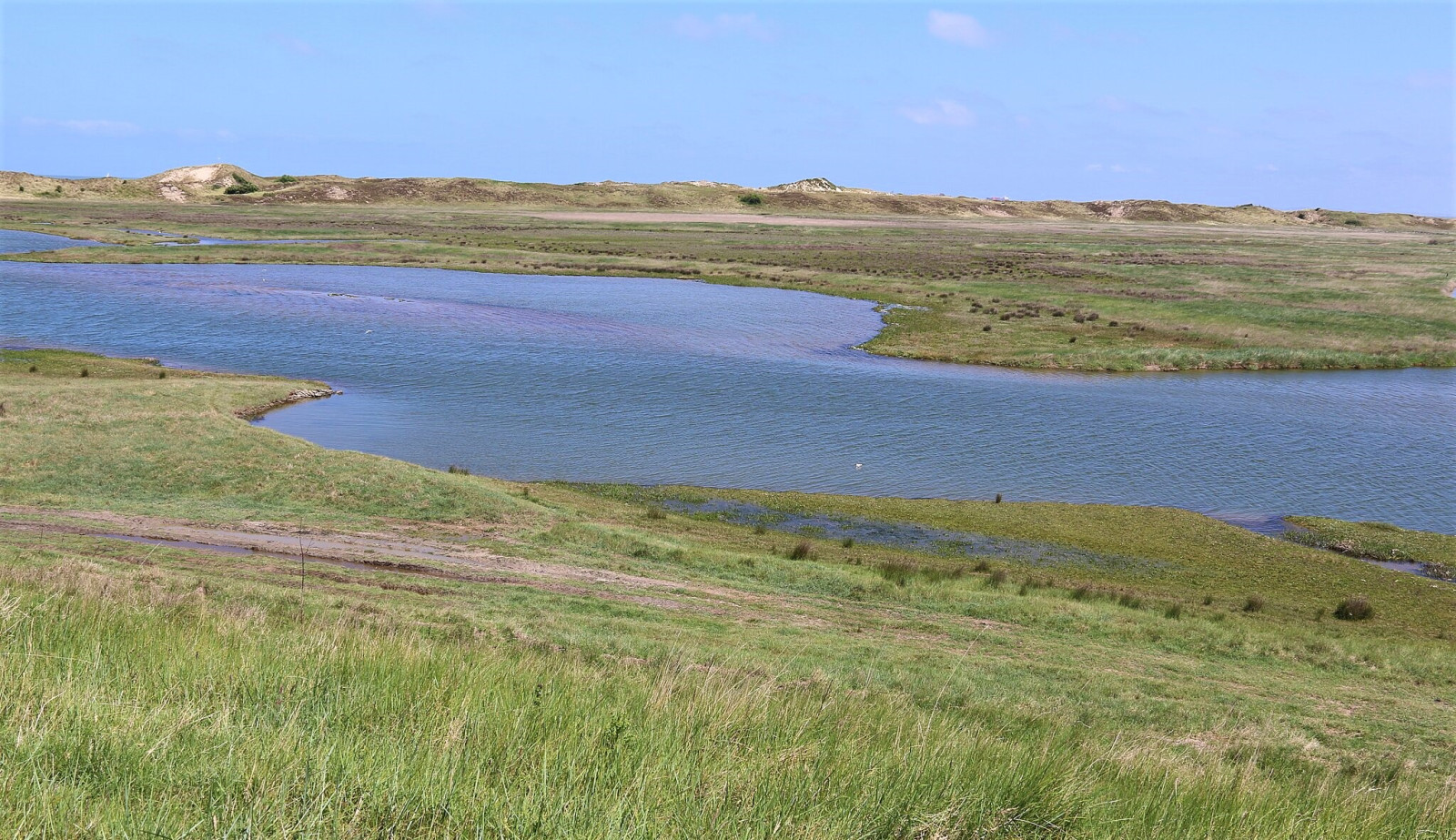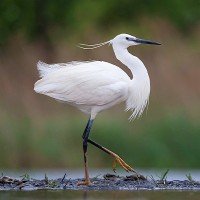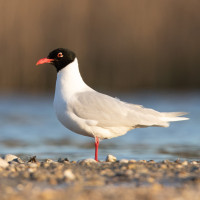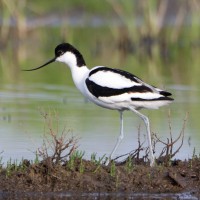Description
The size of the Zwin and the diversity of habitats make this a site that deserves enough time for birding. If you want to cover the birdlife of the Zwin properly, you can easily spend an entire day here. Well over 300 bird species have been recorded in the Zwin, making it one of the most species rich birding spots in the country. The Zwin has a very high protection level and is also both a Ramsar site and a Natura 2000 site.
The Zwin is worth a visit all year round. With about 100 species of breeding birds and due to the location along the coast (migratory birds!), spring is definitely a prime time to bird. Eyecatching breeding birds are bela štorklja, mala bela caplja, duplinska kozarka, sabljarka, rdečenogi martinec, komatni deževnik, mali deževnik, beloceli deževnik, rečni galeb, črnoglavi galeb, navadna čigra, mala čigra, divja grlica, mlinarček, rumeni vrtnik, svilnica, prosnik, modra taščica, slavec, kobiličar, hribski škrjanec and sivi muhar.
Spring migration can be good from March until May. Especially when there is an easterly wind, visible migration can be strong, and on some days even very impressive. Depending on the timing, many tens of thousands of travniška cipa can stream past on such days, as well as thousands of kmečka lastovka, mestna lastovka, breguljka and hudournik, and tens of žličarka and raptors like rjavi lunj. Such days with strong spring migration always yield scarce species as well, such as rjava čaplja, črni škarnik or komatar. Besides visible migration, spring is also an excellent time to watch resting migrants. With all the wetland habitat in the Zwin it is no surprise that waders can be present in considerable numbers ( črna prosenka , komatni deževnik , mali škurh , zelenonogi martinec , rdečenogi martinec , črni martinec , spremenljivi prodnik , progastorepi kljunač , etc.). The total list of migrant species that can be seen is very long. Of course, anything can happen, and scarce and even rare birds show up every spring. In recent years these have included species like kreheljc (american subspecies), stepski lunj, rdeca lastovka, taščična penica, iberska listnica and many more.
After the intensity of spring migration, summer is a somewhat slower time for birding. A set of interesting breeding birds keeps a visit worthwile nevertheless. Not to miss are the various breeding islands that are spread across the reserve, with breeding colonies of rečni galeb, črnoglavi galeb, navadna čigra, mala čigra and sabljarka. bela štorklja and mala bela caplja are also not to be missed. From early summer onwards, numbers of mala bela caplja build up, as well as numbers of žličarka. Arctic waders also start showing up already from July onwards into autumn, with species like spremenljivi prodnik , veliki prodnik , srpokljuni prodnik , črna prosenka , mali škurh , rdečenogi martinec , etc.).
During August autumn migration goes on more heavily and continues well into November. Many species can be seen during autumn migration, sometimes in good numbers. The species and numbers depend on the timing and on weather conditions, but on good days it offers truly great birding in the Zwin. Waders keep moving through. ribji orel are almost guaranteed from the end of August to early October. Many species of passerines pass through. Visible migration is less obvious than in spring, but can still be great to watch on some days, especially from the end of September until early November when thrushes, škorec, finches and tits move through. On some days in October and November and even well into December, many hundreds of geese can be seen on migration, especially beločela gos and kratkokljuna gos. bela štorklja are present until halfway August, after which most birds leave on migration. At the end of September and during the first half of October, mušja listnica is regularly observed. Other scarce and rare birds are also found every year. In recent years these have included species like sabljasti martinec , ameriška prosenka , sibirska prosenka , ozkokljuni liskonožec, kaspijska čigra, mali orel , rjavi srakoper, orientalski srakoper, plašica, povodna trstnica, robidna trstnica, Rjava listnica and so on.
Winter is more quiet again after the thrill of autumn migration, but it is nevertheless a great time to come birding here. Considerable numbers of waterbirds are present, although numbers vary somewhat. Hundreds and even a few thousands of geese can be present, mainly siva gos, beločela gos and belolična gos, but the flocks regularly switch with other areas in the wider region. All the common duck species winter here, mostly dabbling ducks, with the most common species being duplinska kozarka, mlakarica and žvižgavka. Diving ducks are much scarcer because deep water is lacking. Almost 20 species of wader can be observed during winter, some like veliki škurh, črna prosenka , rdečenogi martinec and spremenljivi prodnik in good numbers. Interesting wintering raptors are pepelasti lunj, mali sokol and sokol selec and in some winters močvirska uharica can be easily seen. The saltmarsh of the Zwin plain is great for wintering passerines, most notably tens of obalna vriskarica and in most winters laponski ostroglež, snežni strnad and uhati škrjanec.
There is a bird ringing station that is manned almost daily during autumn migration from August to mid November. Visitors to the Zwin Nature Park can visit the ringing station. Some memorable species have been ringed at this ringing station since 2017, including absolute stunners such as orientalski srakoper , rubinasti slavec , belogrli vrabonad , bičji kobiličar and rečni cvrčalec , as well as a number of more other scarce and rare birds such as grahasta tukalica , Siberian Chiffchaff, tens of mušja listnica , several povodna trstnica , several robidna trstnica , several pisana penica and mali strnad .
As already mentioned above, scarce and rare birds regularly show up in the area. No less than nine bird species had their first Belgian record in the Zwin, most recently a orientalski srakoper in 2017!
As if all the birdlife would not be enough, the Zwin is also excellent for many other species groups. It is one of the only areas in Belgium where common tree frog still occurs. Thanks to conservation efforts the species is thriving nowadays, and the frogs can be easily observed during the warmer months of the year, especially during summer and until early October. It is also a very interesting area for invertebrates and plants.
Details
Access
The Zwin Nature Park has a large and modern visitor center called the Zwin Nature Park. About half of the whole Zwin area, including the unique saltmarsh habitat, can be visited only through the Zwin Nature Park, and an entrance fee must be paid to enter. The visitor center itself includes a large and impressive interactive exhibition about bird migration. There is also an educational trail next to the visitor center. There are bird and nature related activities, including regular guided tours, throughout the year. It is also possible to book a private guide. The Zwin Nature Park is the only way to get direct access to the saltmarsh of the Zwin plain, and there are two public trails in the plain that allow you to observe the birdlife. Some parts of these trails can be under water during spring tide, so it is advisable to wear waterproof boots during spring tide. A tidetable can be consulted in the visitor center. For opening times and other information about the Zwin Nature Park see www.zwin.be. Besides the Zwin Nature Park, the rest of the Zwin can be visited for free. There are several walking trails and biking trails.
There is a large parking lot at the Zwin Nature Park, but there is a fee to park there. Visitors of the Zwin Nature Park pay less. There is a bus service to the parking from the town of Knokke-Heist, including a connection with the train station of the town, but this operates only from April to September.

.jpg)

.jpg)


